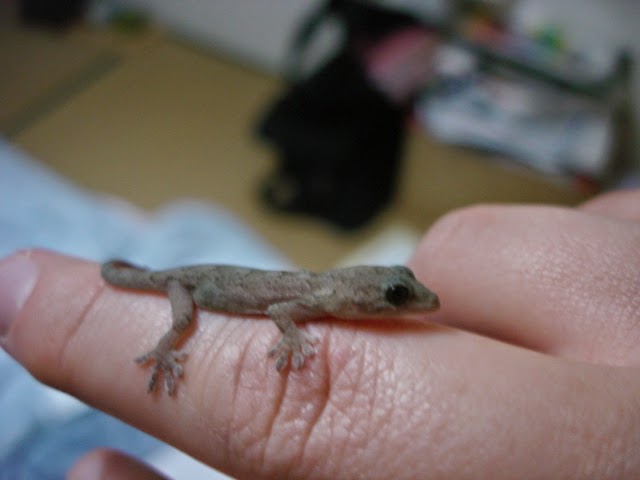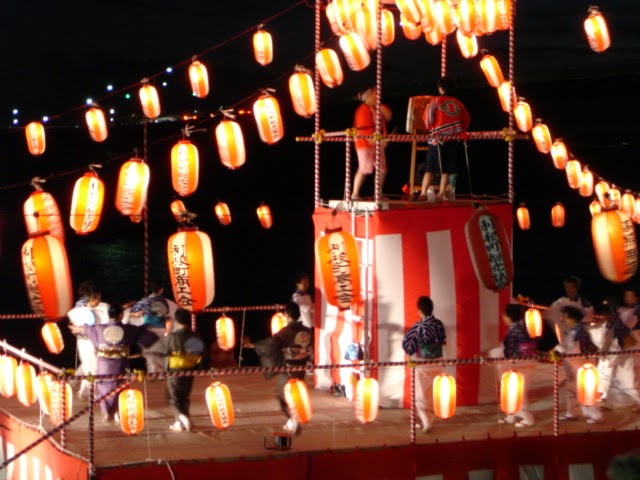Shichijuni-kou (72 Seasons) Calendar Listing
初秋, Shoshu: "Early Autumn"
Season No. 13: 立秋: Risshu
"The Start Of Autumn"
 |
| An indigo noren curtain catches the breeze in the front door of soba shop (Matsue, Shimane). |
Suzu Kaze Itaru
"Cool Winds Blow"
(August 7 -August 11)
We all wait for nighttime, when it feels as if the door to the heavens has literally cracked open, allowing us a breath of the sweet, cool air flowing in. The daytime sunlight is still painfully strong and biting, but the hours around high noon bring a more tolerable warmth. We don't need the air conditioner except for a few hours a day. (This will help us out a lot since our utility costs are so high this time of year). Evey lungful of early autumn air saves our bodies extra work, giving us more energy for the demands of the festive Obon holiday.
 |
| A lovely tiger lily marks the entrance to Koubou Temple (弘法寺) on Mt. Noro (Kure, Hiroshima). |
A symbol of wealth, the oniyuri (Lilium Maximowiczii) is both a cultivar and wildflower in Japan. In my travels around the country, I've seen it edging roadsides, rice fields and parking lots in the Kanto, Kinki and Chugoku regions, thus far. Yet it's so strikingly tall and graceful that I can't help but think someone must have deliberately put the bulbs into the ground. Literally translated as "demon lily," oniyuri gets its name from both its coloring and demon-like appearance. But instead of striking fear into my heart whenever I see it, the oniyuri uplifts me like no other flower! I always look forward to them when they bloom!
Critter Of The Season: ヤモリ, Yamori, Schlegel's Japanese Gecko
 |
| Gecko with eyes glowing from my camera flash (Hikone, Shiga). |
 |
| A gecko hatchling I found in my kitchen clings desperately to my warm finger (2007, Ibaraki Pref). |
Their name yamori comes from the words ya (家, house) and mori (守, protect). Young parents will more than likely cringe at the thought of these creatures inside their fancy, high-tec condominiums. But the older generation of Japanese have no qualms letting a few yamori live peacefully inside the walls. (Free, organic pest control!)
Apparently, this species has both a squeaky mating call and an alarm for when they feel threatened. Perhaps my handling technique makes geckos feel too safe to squeal, since I've never heard one freak out, yet. (Hopefully that's the case). But they're quite vocal at night, chirping loudly from building foundations, sounding closer to a rusty bicycle tire in need of a good lube but lacking the acoustic richness of a grasshopper chirp. Nonetheless, I like knowing from the sound that these little critters are nearby, another comforting sound of the season.
Event Of The Season: お盆, Obon, Festival Of Souls
"Not to think of yourself
As someone who did not count.
The Festival of Souls."
-Matsuo Basho
 |
| Excited residents of Tone, Ibaraki awaiting sundown and Obon festivities along the banks of the mighty Tone River (2005). |
 |
| Dancing and drumming on an elevated stage at the Obon Matsuri in Tone, Ibaraki (2005). |
 |
| My mentor gleefully showing me the correct hand position for the Bon Odori dance. |
There are many Obon songs out there, some with their own specific motions, so the steps you learn in one town might make you look different in another. But no matter. I'd like to say that you'll get the hang of it quickly, but I never did. Yet it's so much fun to just jump right into the circle and start going for it like it's the last dance of your life, which it very well might be if the humidity and heat are high enough. But working up a sweat in the dance circle is a great way to justify eating all those skewers of scrumptious yatai vendor foods!
 |
| Lining up for some sizzling skewered treats! |
Just weeks after surviving my own brush with death, I was fortunate to catch the Hikone City Toro Nagashi festival along the banks of the Seri River. In a backdrop of sacred darkness, hundreds of people knelt down at the water's edge and quietly released their lanterns into the gently flowing current with a push and the folding of hands in prayer. The sultry night air was heavy with sorrow that night, as many bid a teary farewell to their loved ones, many who were victims in the Great Tohoku Earthquake earlier that spring. I found myself crying along silently from the opposite bank, finally taking important time to process all the sorrow and loss we'd witnessed when we lived in northern Kanto during the time of the quake. Obon is a much-needed time of emotional release and catharsis in a land where the outward display of emotion is more or less discouraged.
As Paul Simon says, "sometimes, even music cannot substitute for tears."
 |
| "Prayers For Safe Passage" (c) 2011 Genkilee, Gen. All Rights Reserved. |
Copyright 2014 Genkilee, Gen. All rights reserved. No part of this blog (written or photo content) may be reproduced or reprinted without the expressed permission of the author.
No comments:
Post a Comment